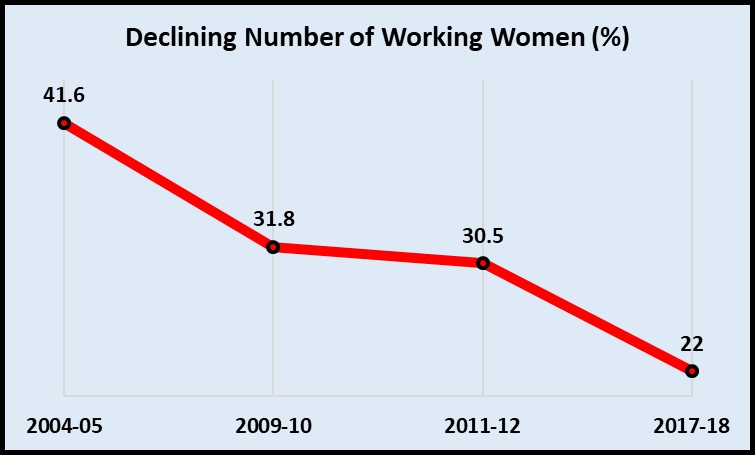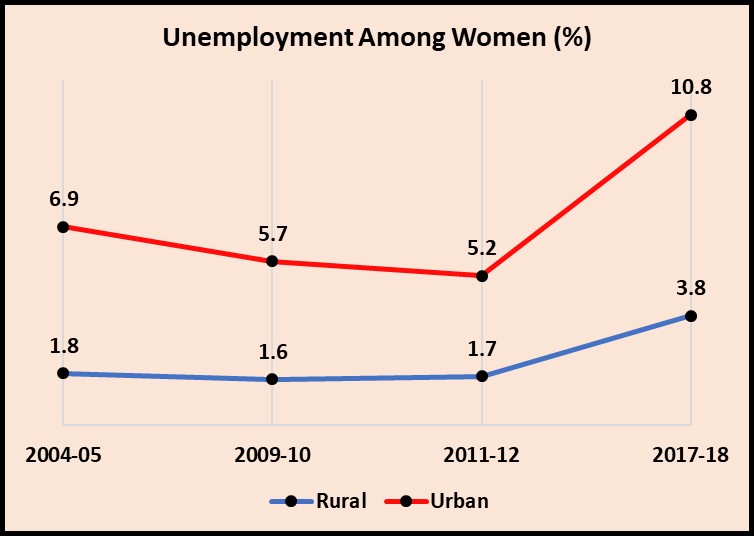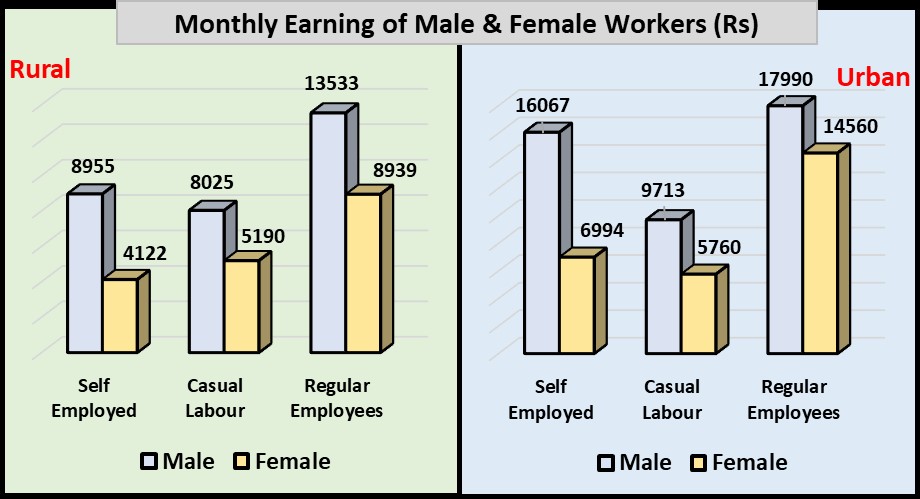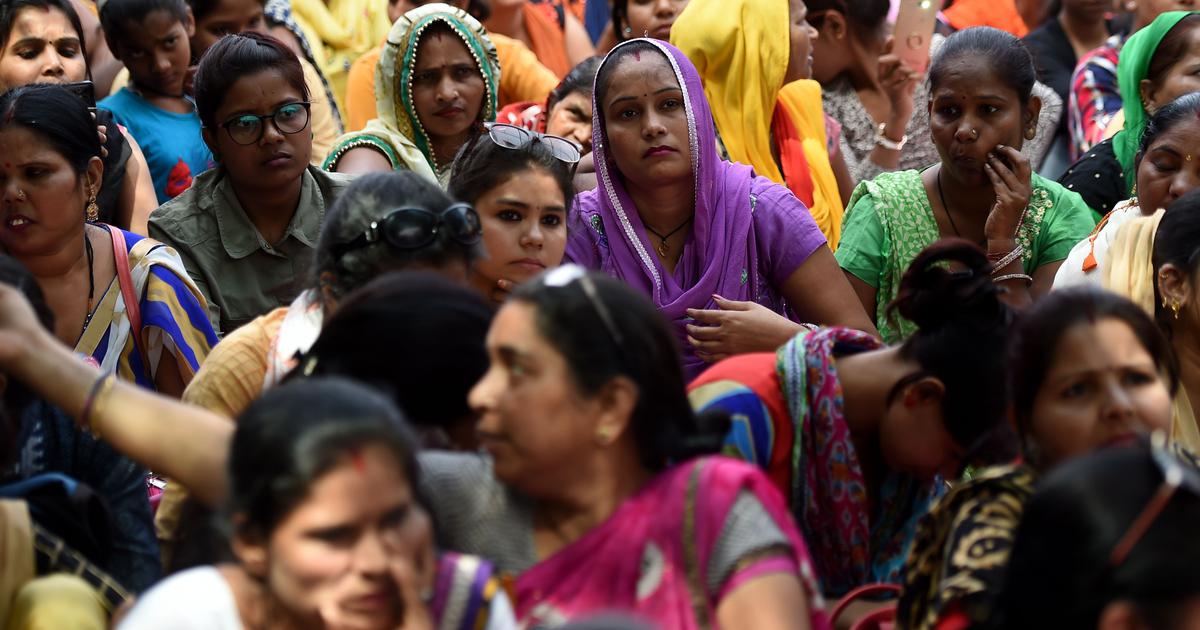Women’s work participation has dramatically declined, unemployment is at an all-time high and they often get half the wage of what men get for same work, shows the latest labour force survey report.
The recently released Periodic Labour Force Survey (PLFS) for 2017-18 reveals a striking decline in women’s participation in the workforce. Only about 22% of women of working age (defined as 15 years of age or more) were gainfully employed, down from about 31% in 2011-12, as estimated by the 68th Round of National Sample Survey Organisation survey. Workforce participation has been continuously declining in India (see chart below) and the latest level is nearly half of what it was in 2004-05. This is one of the lowest work participation rates in the world.

These latest estimates are for what is called the ‘usual status (principal+subsidiary)’ which means that any woman who worked for a large part of the preceding year in an occupation as well as those who worked in subsidiary occupations (for more than 30 days in the year) are included as employed. This is a rather nebulous definition and includes a large number of under-employed women. Despite that, the remarkably small share of women in work highlights the deteriorating problem of women’s employment in the country. No government, whether the current one in its previous tenure or earlier ones, have seriously addressed this tragic situation.
So, what are the rest of the women doing? The bulk of them are no longer in the labour force, that is, they are not seeking jobs. They confine themselves to domestic duties, which in India include such drudgery as collecting firewood or fetching water, as also looking after cattle. Needless to say, that they also do all the care work at home. Another factor limiting women’s work participation is the patriarchal ideas that still dominate India’s families which do not approve of women going out of the home for remunerative work.
This does not mean that these home-bound women are all unwilling to work or the family does not need them to work. As the chart below shows, women’s unemployment, that is, the share of women who are seeking work but are unable to find it, has increased precipitously in the past few years.

In rural areas, where the bulk of women stay, joblessness has doubled from 1.7% in 2011-12 to 3.8% in 2017-18, according to the PLFS 2017-18. In urban areas, too, it has doubled in that period from 5.2% to 10.8%.
Among the women who do go out to work – impelled by a stark need to supplement family incomes in these times of economic crisis – the wage or salary levels are shockingly low, as can be seen in the chart below, drawn from the PLFS report.

Note that even among the regular wage or salary earners, women’s monthly earnings are 34% less than men’s in rural areas and 20% less in urban areas. The biggest difference in earnings is in the vast self-employed sector where women’s earnings are half of men’s in rural areas and 60% less in urban areas. This is because self-employed workers (who run their own small enterprises like petty shops or service providers of all kinds) usually have the women folk of the family assisting in the work, with hardly any demarcated earning. Also, many of the very small shops (like selling candies or tobacco products or vegetables) is left to women while the men go for other work.
However, the main employment for women in the self-employed category comes from personal and other services which employ over 44% women in urban areas and about 9% in rural areas. These are all the maids, cooks, ayahs, housekeepers, sanitation workers, and similar service providers that smoothen the lives of urban families with disposable incomes.
Women are also employed in large numbers in outsourced care work like health workers, anganwadi workers, cooks in schools, nurses etc. – all of them at very low wages and no job security.
According to the PLFS, women’s employment in the manufacturing sector has stagnated at around 8% in rural areas and about 25% in urban areas for the past nearly one and a half decades. Construction, which was once a big source of women’s employment, appears to no longer be in good shape as, in rural areas, women’s employment has declined from 6.6% in 2011-12 to 5.6% in 2017-18, while in urban areas it has practically stagnated at around 4%.
What the latest data from this PLFS unequivocally establishes is that while the overall employment situation is dire (with joblessness at 6.1%), women continue to suffer the brunt of this crisis with higher rates of unemployment, lesser opportunities and continued lower wages. And, the present government – like all its predecessors – has no clue about how to solve this crisis.
Courtesy: Newsclick.in

